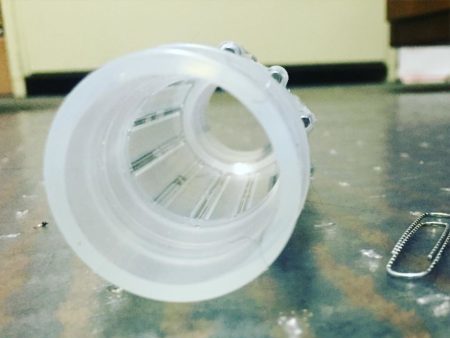Choosing the Right Silicone for Your Prototype Model
Silicone is a common manufacturing material, used in applications such as gaskets, surgical implants, and adhesives. It’s a highly durable, heat-resistant elastomer that performs reliably under harsh environmental conditions.
But not all silicones are alike. Factors like temperature and chemical resistance, mechanical properties, and durability vary from one silicone to the next.
Need help selecting the best silicone for your prototype model? Here’s what you need to know about the three most common types of silicone.
Room Temperature Vulcanization (RTV) Silicone
- Temperature resistance. RTV cures at room temperature. As the least heat-resistant of the three types of silicone, it can withstand temperatures up to 400 degrees Fahrenheit. RTV is best suited for casting low-melt metals and alloys, like zinc, tin, and pewter.
- Chemical resistance. RTV’s exceptional chemical-resistant properties make it an excellent candidate for applications in the food and medical industries, where protection against abrasive surfaces is necessary. RTV can also bond to a variety of different surfaces when combined with platinum and tin cures.
- Mechanical properties. RTV has impressive release properties compared to other molded rubbers. In fact, no release agent is required, giving RTV a significant advantage for the production casting of resins like polyurethane, polyester, and epoxy. RTV’s low viscosity makes injection molding a breeze.
- Appearance. RTV is clear in its natural state but capable of tolerating pigment. The recommended injected loading range of the pigment into the silicone is between 0.01% to 3.00% of the total silicone weight.
- Cost. Costs can vary widely depending on part complexity, but RTV is generally one of the least expensive silicone options.
- Durability. RTV is available in a range of hardnesses from soft and pliable to extremely hard with no deformation.
- Applications. Due to its viscosity and ability to withstand stress, RTV is commonly used to cast materials like wax, gypsum, and urethane resins for aerospace or consumer electronics applications. At KAD, we use RTV to mold many of our large silicone parts.
- Lead time. Despite RTV’s first-rate release properties, it has a slow deload time of up to 24 hours, which is quite a bit longer than other common types of silicone.
Liquid Silicone Rubber (LSR)
- Temperature resistance. Liquid Silicone Rubber can withstand extreme temperatures from -150°F to over 420°F, making it a strong candidate for applications in extremely cold or hot environments.
- Chemical resistance. Whether it’s exposed to wind, rain, steam, UV light, or oil, LSR remains intact despite harsh conditions. It also resists corrosion and fights bacteria.
- Mechanical properties. Due to its low viscosity and high-purity thermosetting, LSR is exclusively processed via injection molding and heat-cured during the molding process. It boasts good elongation, high tear and tensile strengths, and superior flexibility.
- Appearance. Like RTV, Liquid Silicone Rubber is transparent and can be combined with pigments to produce brightly colored parts.
- Cost. LSR is a cost-effective material due to its availability and quick demold time, although the price can vary depending on part size.
- Durability. With a hardness range of 5 to 80 Shore A, LSR is fatigue-resistant and exceptionally strong.
- Applications. Liquid Silicone Rubber is highly versatile and can be used for many applications, including medical-grade parts with bacteria-resistance requirements and automotive components exposed to hot temperatures.
- Lead time. LSR has the fastest demold time of the three types of silicone and can be cycled every 4 or 5 minutes to produce hundreds of parts per day.
High Consistency Rubber (HCR)
- Temperature resistance. HCR offers impressive temperature resistance ranging from -50°F to almost 500°F.
- Chemical resistance. HCR is naturally biocompatible and fights bacteria, mold, and mildew, which makes it a great option for medical applications.
- Mechanical properties. Even after elongation or compression, HCR consistently maintains its shape.
- Appearance. Manufacturers can color raw HCR in a range of bright, heat-curable blends by injecting pigment into a water-cooled barrel to keep the material from catalyzing.
- Cost. HCR has a gummy consistency that can only be manipulated with large and expensive tools. However, the cost of equipment is comparatively less expensive than the molds required to manufacture LSR products.
- Durability. HCR is exceptionally strong, but because it’s more viscous than LCR, it’s harder to use for injection molding. Typically, HCR is processed using compression and transfer molding methods instead.
- Applications. HCR is used for many applications like cables, hoses, gaskets, tubes, and connectors in the aerospace, automotive, medical, gas, and electronics industries.
- Lead time. Cure times can be lengthy due to HCR’s high viscosity. This silicone may take days to dry completely.
Still not sure which silicone is best for your prototype model? KAD can advise you on the best material for your part and offer silicone molding services no matter which one you choose. Request a quote today!



